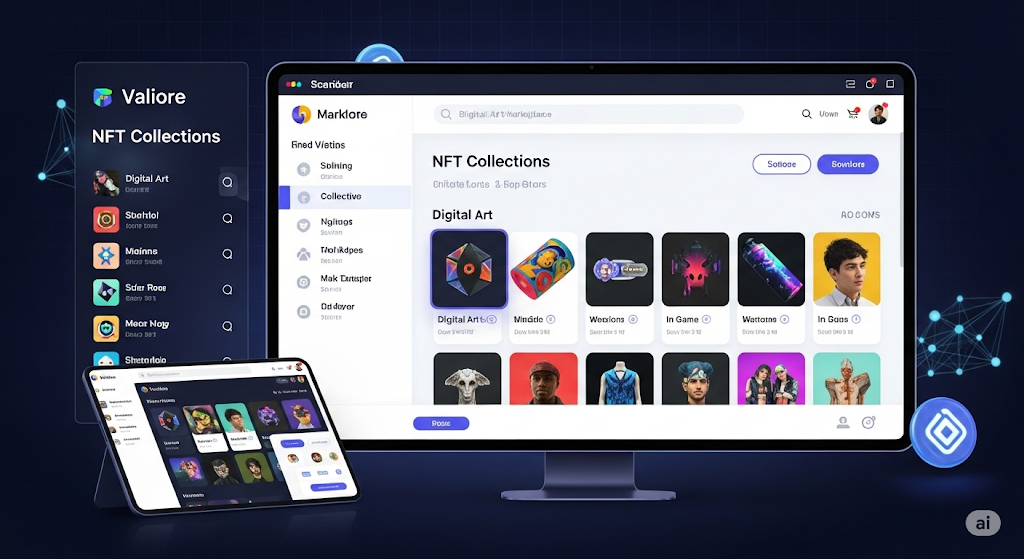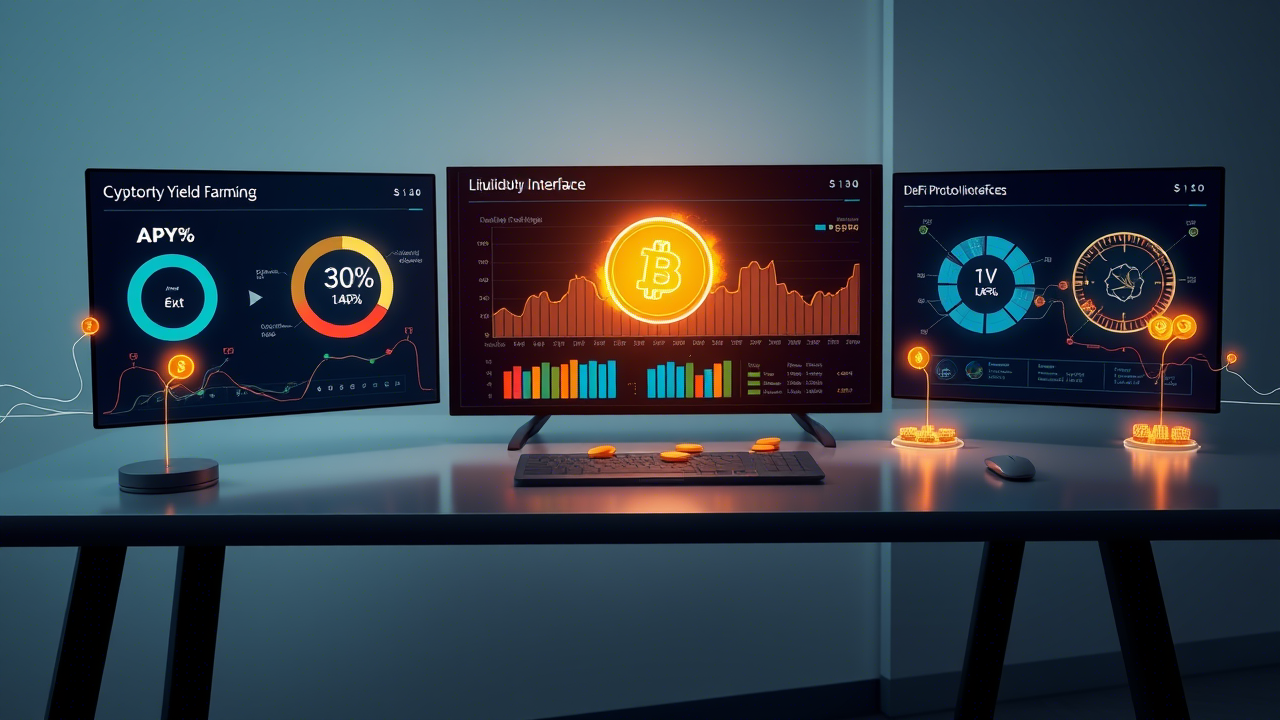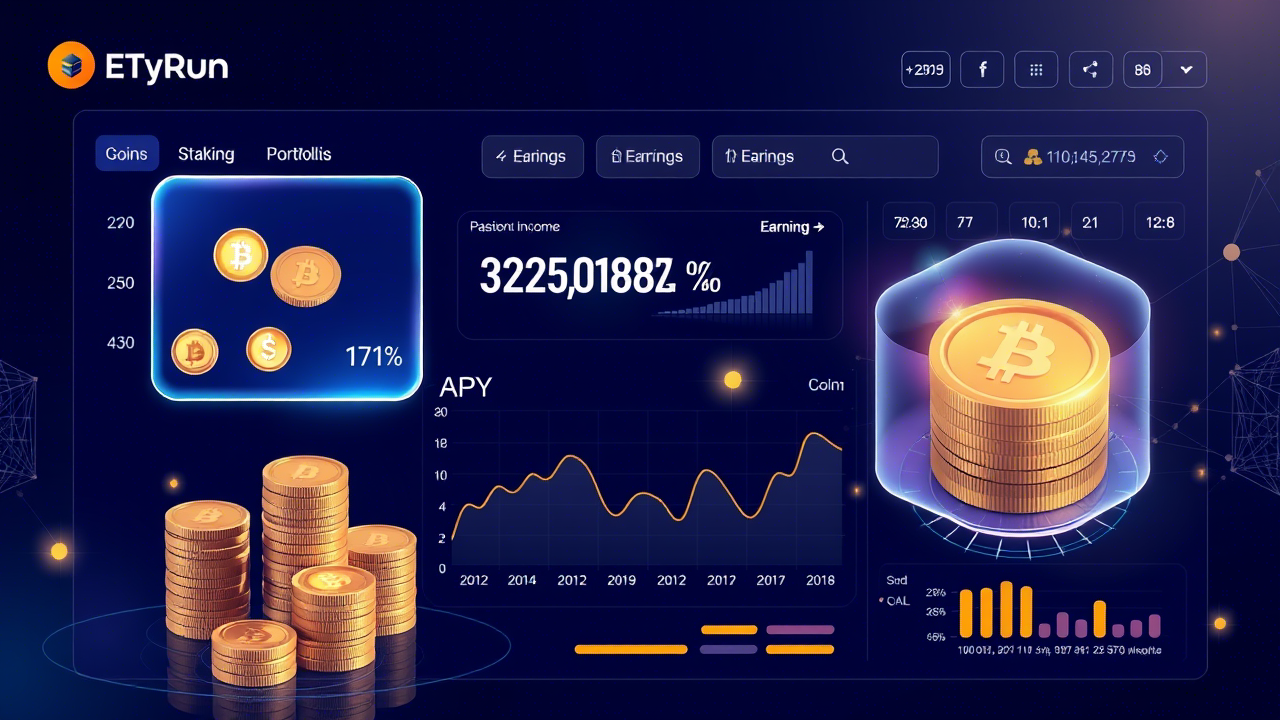The blockchain revolution has transformed how we think about digital transactions, but it has also revealed significant challenges in scaling these networks to handle millions of users simultaneously. Layer 2 crypto solutions have emerged as the game-changing technology that addresses blockchain scalability issues while maintaining the security and decentralization that makes blockchain technology so powerful.
As blockchain adoption continues to grow exponentially, understanding layer 2 crypto becomes crucial for anyone looking to invest in the future of digital finance. These scaling solutions don’t just improve transaction speeds and reduce costs; they open up entirely new possibilities for decentralized applications, smart contracts, and everyday cryptocurrency usage.
Understanding Layer 2 Crypto Meaning
Layer 2 crypto refers to secondary blockchain protocols built on top of existing main blockchains (Layer 1) to improve their scalability, transaction speed, and cost efficiency. Think of Layer 2 as an express lane on a highway – it allows traffic to move faster while the main road continues to operate normally.
These solutions work by processing transactions off the main blockchain and then settling the final results back to the Layer 1 network. This approach dramatically reduces congestion on the main chain while maintaining the security guarantees that users expect from blockchain technology.
The concept emerged from the blockchain trilemma, which states that blockchain networks can typically only optimize for two out of three key features: security, decentralization, and scalability. Layer 2 solutions cleverly work around this limitation by handling scalability requirements while letting the base layer focus on security and decentralization.
Most cryptocurrency investment strategies now consider Layer 2 protocols as essential components of a well-diversified portfolio, given their potential to solve fundamental blockchain infrastructure problems.
Blockchain Scaling Challenges
Before diving into Layer 2 solutions, it’s important to understand the scaling challenges that blockchain networks face. Bitcoin, the first and most well-known cryptocurrency, can process only about 7 transactions per second. Ethereum, despite being more advanced, handles approximately 15 transactions per second.
Compare this to traditional payment systems like Visa, which can process over 24,000 transactions per second, and the scaling problem becomes clear. As more people adopt cryptocurrencies and decentralized applications, these networks become congested, leading to slower transaction times and higher fees.
The scalability challenge isn’t just about transaction throughput. It also involves storage requirements, as every node in the network must store the entire blockchain history. As blockchains grow, this becomes increasingly demanding for network participants.
Network congestion creates a negative feedback loop where higher fees push away casual users, limiting adoption and practical utility. This is where Layer 2 solutions shine, providing the infrastructure needed to support mass adoption without compromising on security or decentralization.
Understanding these crypto market cycles helps investors recognize when scaling solutions become most valuable during periods of high network activity.
Crypto Scalability Solutions Overview
Crypto scalability solutions can be broadly categorized into two main approaches: Layer 1 improvements and Layer 2 solutions. Layer 1 improvements involve changes to the base blockchain protocol itself, such as increasing block size or implementing more efficient consensus mechanisms.
Layer 2 solutions, on the other hand, operate independently of changes to the main blockchain. They include state channels, sidechains, plasma chains, and rollups. Each approach has different trade-offs in terms of security, decentralization, and usability.
State channels allow participants to conduct multiple transactions off-chain and only settle the final result on the main blockchain. This is particularly useful for applications requiring frequent interactions between the same parties, such as gaming or micropayments.
Sidechains are separate blockchains that run parallel to the main chain, with their own consensus mechanisms and validators. They can process transactions faster and cheaper while periodically anchoring to the main chain for security.
Rollups represent the most promising Layer 2 technology, bundling multiple transactions into a single transaction that gets submitted to the main chain. This approach maintains strong security guarantees while dramatically improving throughput.
For those interested in blockchain technology fundamentals, understanding these scaling approaches provides crucial context for evaluating investment opportunities.
Layer 2 Blockchain Architecture
The architecture of Layer 2 blockchains is designed to create a seamless bridge between high-performance scaling and rock-solid security. At its core, Layer 2 architecture consists of three main components: the execution layer, the settlement layer, and the data availability layer.
The execution layer handles transaction processing, smart contract execution, and state management. This is where the actual scaling happens, as Layer 2 networks can process thousands of transactions per second without being constrained by the base layer’s limitations.
The settlement layer connects back to the main blockchain, ensuring that all transactions are ultimately secured by the Layer 1 network’s consensus mechanism. This connection is crucial for maintaining the security guarantees that users expect from blockchain technology.
Data availability ensures that all transaction data remains accessible and verifiable. Some Layer 2 solutions store this data on the main chain, while others use alternative approaches like data availability committees or separate data availability layers.
The beauty of this architecture lies in its modularity. Different Layer 2 solutions can optimize for different use cases while maintaining interoperability with the base layer and other scaling solutions.
Modern blockchain applications increasingly rely on this layered architecture to deliver enterprise-grade performance while maintaining decentralization.
Layer 1 vs Layer 2 Crypto Comparison
Layer 1 cryptocurrencies represent the foundation of blockchain networks – the base protocols that establish consensus rules, security parameters, and fundamental operations. Examples include Bitcoin, Ethereum, Cardano, and Solana. These networks prioritize security and decentralization, often at the expense of transaction speed and cost.
Layer 2 cryptocurrencies, conversely, are built to enhance Layer 1 capabilities without replacing them. They inherit security from the base layer while providing improved performance metrics. This relationship is symbiotic – Layer 2 solutions need Layer 1 for ultimate security, while Layer 1 networks benefit from reduced congestion.
The investment characteristics differ significantly between these layers. Layer 1 tokens typically have established market positions and are considered more stable investments. They often serve as the primary value accrual mechanism for their respective ecosystems.
Layer 2 tokens tend to be more volatile and speculative, but they also offer higher growth potential as they solve critical infrastructure problems. Their value propositions are often tied to specific use cases or technological advantages.
From a technical perspective, Layer 1 networks must balance the blockchain trilemma directly, while Layer 2 solutions can focus specifically on scalability and user experience. This specialization often results in superior performance for specific applications.
Understanding both layers is crucial for comprehensive crypto investment strategies as they serve different roles in the broader blockchain ecosystem.
Ethereum Layer 2 Projects
Ethereum’s Layer 2 ecosystem represents the most mature and diverse collection of scaling solutions in the cryptocurrency space. The Ethereum Foundation has actively encouraged Layer 2 development as part of their scaling roadmap, leading to numerous innovative projects.
Polygon (formerly Matic Network) stands out as one of the most successful Ethereum Layer 2 solutions. It provides a framework for building and connecting blockchain networks, offering multiple scaling solutions including plasma chains, zk-rollups, and optimistic rollups. Polygon has attracted hundreds of decentralized applications and processes millions of transactions daily.
Arbitrum and Optimism represent the leading optimistic rollup solutions for Ethereum. These projects use fraud proofs to ensure transaction validity while providing near-instant transaction finality and significantly lower fees than the Ethereum mainnet.
StarkWare’s StarkEx and zkSync focus on zero-knowledge proof technology, offering superior privacy and security properties alongside excellent scaling performance. These solutions are particularly popular for decentralized exchanges and payment applications.
Loopring provides a specialized Layer 2 solution for decentralized exchanges, using zkRollup technology to enable high-frequency trading with minimal fees. The protocol has processed billions of dollars in trading volume while maintaining strong security guarantees.
These projects demonstrate the diversity of approaches possible within the Layer 2 ecosystem, each optimized for different use cases and user requirements. According to CoinMarketCap, the combined market capitalization of Layer 2 tokens continues to grow as adoption increases.
Best Layer 2 Crypto Coins Analysis
Identifying the best Layer 2 crypto coins requires careful analysis of technology, adoption metrics, development activity, and market positioning. Several standout projects have emerged as leaders in their respective categories.
Polygon (MATIC) has established itself as the most widely adopted Ethereum Layer 2 solution, with over 7,000 decentralized applications deployed on its network. The token serves multiple purposes including staking, governance, and fee payments, creating strong utility-driven demand.
Arbitrum (ARB) gained significant attention following its token launch, quickly becoming one of the most valuable Layer 2 projects. The network processes more daily transactions than Ethereum itself, demonstrating real utility and adoption.
Optimism (OP) pioneered the optimistic rollup approach and has built a strong ecosystem of applications. The project’s focus on public goods funding and retroactive rewards has created a unique community-driven development model.
Loopring (LRC) specializes in decentralized exchange functionality, offering institutional-grade performance for trading applications. The token’s value is closely tied to trading volume and the growth of decentralized finance.
Immutable X (IMX) focuses specifically on NFT and gaming applications, providing gas-free minting and trading capabilities. As the NFT market evolves, Immutable X has positioned itself as essential infrastructure for digital collectibles.
Each of these projects represents different approaches to Layer 2 scaling, offering investors exposure to various aspects of the scaling solution market. For deeper insights into cryptocurrency trading strategies, evaluating Layer 2 projects requires understanding their specific technological advantages.
Layer 2 Crypto Investment Opportunities
The Layer 2 crypto investment landscape offers numerous opportunities for both conservative and aggressive investors. The sector benefits from clear utility value propositions, solving real problems that affect millions of users daily.
Direct token investments in Layer 2 projects provide exposure to the growth of specific scaling solutions. These investments can be particularly rewarding during periods of network congestion when the value of scaling solutions becomes most apparent.
Ecosystem plays offer another investment avenue, focusing on applications and services built on top of Layer 2 networks. As these scaling solutions mature, they enable new categories of applications that weren’t previously feasible on Layer 1 networks.
Infrastructure investments in data availability layers, cross-chain bridges, and developer tools provide exposure to the broader Layer 2 ecosystem growth. These investments tend to be more diversified and less dependent on individual project success.
Yield farming and liquidity provision opportunities are often more attractive on Layer 2 networks due to lower transaction costs. This makes smaller investors more competitive in decentralized finance activities.
The investment thesis for Layer 2 solutions strengthens as blockchain adoption grows, making these projects increasingly essential for the cryptocurrency ecosystem’s long-term success. Many investors incorporate best cryptocurrency investment opportunities by focusing on Layer 2 protocols with strong fundamentals.
Layer 2 Token Economics
Understanding Layer 2 token economics is crucial for evaluating investment opportunities in this space. Unlike Layer 1 tokens that primarily serve as native currencies, Layer 2 tokens often have more complex utility and value accrual mechanisms.
Most Layer 2 tokens serve multiple functions within their respective ecosystems. They typically act as gas tokens for transaction fees, governance tokens for protocol decisions, and staking tokens for network security. This multi-utility approach creates diverse demand drivers.
Fee collection represents a primary value accrual mechanism for many Layer 2 tokens. As network usage increases, more tokens are required for transaction fees, creating natural demand pressure. Some protocols burn a portion of collected fees, reducing total supply over time.
Staking mechanisms provide additional utility by allowing token holders to participate in network security and earn rewards. This creates an incentive for long-term holding and reduces circulating supply.
Governance rights give token holders influence over protocol development, fee structures, and ecosystem fund allocation. This democratic approach to network governance has become increasingly important as protocols mature.
The economic sustainability of Layer 2 tokens depends on their ability to generate sufficient fee revenue to support network operations while providing competitive transaction costs for users. Ethereum’s official documentation on Layer 2 scaling provides comprehensive technical details for investors seeking deeper understanding.
Layer 2 Crypto Price Analysis
Layer 2 crypto prices exhibit unique characteristics that differ from both Layer 1 tokens and traditional cryptocurrencies. These price movements are often driven by network adoption metrics, technological developments, and broader market sentiment toward scaling solutions.
Network usage metrics strongly influence Layer 2 token prices. Increasing transaction volumes, total value locked, and active user counts typically correlate with positive price performance. This relationship is more direct than for many other cryptocurrency categories.
Technological milestones and upgrades can create significant price volatility. Major updates, new partnerships, or integration with popular applications often trigger substantial price movements as investors reassess value propositions.
Market sentiment toward the broader blockchain scaling narrative affects all Layer 2 tokens simultaneously. During periods of network congestion on major blockchains, Layer 2 solutions typically experience increased attention and investment flows.
Competitive dynamics within the Layer 2 space can create winners and losers. Projects that successfully attract developer mindshare and user adoption often outperform those that struggle with ecosystem development.
Regulatory developments and institutional adoption patterns also influence Layer 2 prices, particularly as these solutions become more integrated into mainstream financial applications. Understanding crypto technical analysis helps investors identify optimal entry and exit points for Layer 2 investments.
Layer 2 Crypto Risk Assessment
Investing in Layer 2 cryptocurrencies involves several unique risk factors that potential investors should carefully consider. Technology risk ranks among the most significant concerns, as Layer 2 solutions often implement complex cryptographic proofs and novel consensus mechanisms.
Smart contract risk is particularly relevant for Layer 2 projects, as bugs in scaling protocols can potentially affect all applications built on top of them. This concentrated risk differs from Layer 1 networks where individual application bugs typically don’t affect the entire network.
Centralization concerns arise with some Layer 2 solutions that rely on trusted parties or limited validator sets. While these approaches can improve performance, they may compromise the decentralization properties that make blockchain technology valuable.
Interoperability risks become important as the Layer 2 ecosystem fragments across different scaling solutions. Projects that fail to maintain compatibility with major ecosystems may struggle to attract users and developers.
Regulatory uncertainty affects Layer 2 projects differently than Layer 1 networks, as scaling solutions may face different compliance requirements. Changes in regulatory frameworks could impact the viability of certain scaling approaches.
Market risks include potential obsolescence as new scaling technologies emerge, competition from other Layer 2 solutions, and dependency on the underlying Layer 1 network’s success and security. Investors should consider these factors alongside crypto market analysis when evaluating Layer 2 opportunities.
FAQ
What crypto is Layer 2?
Layer 2 crypto refers to blockchain protocols built on top of existing Layer 1 networks like Ethereum to improve scalability and reduce transaction costs. Popular examples include Polygon (MATIC), Arbitrum (ARB), Optimism (OP), and Loopring (LRC).
Is there a level 2 for crypto?
Yes, Layer 2 solutions are widely available and actively used in the cryptocurrency ecosystem. They process millions of transactions daily and host thousands of decentralized applications, providing essential scaling infrastructure for blockchain networks.
Is Layer 2 crypto a good investment?
Layer 2 crypto can be a good investment for those who believe in blockchain adoption and the need for scaling solutions. However, these investments carry technology risks and depend on successful ecosystem development and user adoption.
Top 10 Layer 2 blockchain projects include which ones?
The top Layer 2 blockchain projects include Polygon, Arbitrum, Optimism, Loopring, Immutable X, zkSync, StarkNet, Metis, Boba Network, and Hermez. Each offers different scaling approaches and specializes in various use cases.
What is Layer 1 crypto?
Layer 1 crypto refers to base blockchain protocols like Bitcoin, Ethereum, Cardano, and Solana. These networks provide the fundamental infrastructure and security for their respective ecosystems, serving as the foundation for Layer 2 solutions.
How do Layer 2 crypto prices compare to Layer 1?
Layer 2 crypto prices tend to be more volatile and tied to adoption metrics, while Layer 1 prices often reflect broader market sentiment and established network effects. Layer 2 tokens may offer higher growth potential but with increased risk.
Final Thought
Layer 2 crypto represents one of the most important technological developments in the blockchain space, addressing fundamental scalability challenges that have limited mainstream adoption. As these solutions mature and demonstrate their value through increased usage and ecosystem development, they are likely to play an increasingly central role in the cryptocurrency landscape.
The investment opportunity in Layer 2 crypto is compelling for those who understand the technology and believe in the long-term growth of blockchain applications. However, success in this space requires careful project evaluation, understanding of technical trade-offs, and awareness of the competitive dynamics between different scaling approaches.
As blockchain technology continues to evolve, Layer 2 solutions will likely become as essential as the underlying Layer 1 networks they serve. For investors willing to navigate the complexity and risks involved, Layer 2 crypto offers exposure to critical infrastructure that could power the next generation of decentralized applications and financial services.












Leave a Reply